June 23, 2021
A Streaming Conversation on Race in America
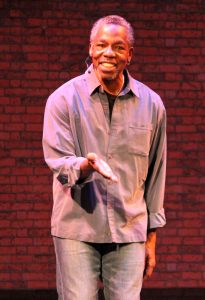
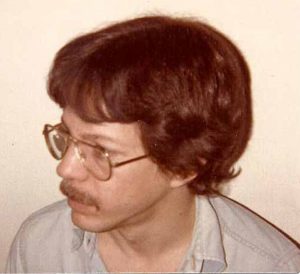
One evening, my friend Terry Talley – a stage actor, a playwright, a manager of charitable donations at UNICEF, a white guy, and an often infuriating but always true-hearted good person – arrived at his unassuming apartment building on Manhattan’s Upper West Side to find two black men standing by the elevator in the entrance hall. Encountering two black men he had not seen before in the lobby at night set off wiggly hairs on the back of Terry’s neck. (A response familiar to you?) He later told me that his initial impulse was to act like he had just remembered something, turn quickly and go back out the door onto the street. Instead, he told himself something like, No. I do not want to be a racial profiler. That’s not who I am. Terry did not turn and leave but waited with the men for the elevator. What happened next leaves, perhaps, no lesson to be learned or, perhaps, a piece of one of the greatest lessons we could ever learn, like: who we are and/or who we want to be. In any case, it leaves high-octane fuel for the ongoing conversation on race in America.
Let me interrupt this story to say that it took place back in the 1990s.
***
Fast forward for a few moments to 2013 when actor LeLand Gantt – in developing his solo examination of race in America, Rhapsody in Black – said, “I just want to start a conversation.” Since then, there has been a lot of talk.
Rhapsody in Black is a one-person show. It is the chronicle of LeLand Gantt’s own personal – though by no means atypical – black man’s journey through the often camouflaged, sometimes undisguised, always variegated aspects of racism in America. It began as a showcase at the Actors Studio. While the piercing, unflinching, and often funny piece on bewilderment, anger and transcendence is written and performed by Gantt, it was directed by – prepare for it… – Estelle Parsons: Academy Award-winning Best Supporting Actress (1967) for the groundbreaker Bonnie and Clyde, and Rosanne’s mother on the sitcom Rosanne. In interviews (2015) for Carousel newspaper, Parsons told me that she calls herself Rhapsody in Black’s, “Directorial Consultant.”
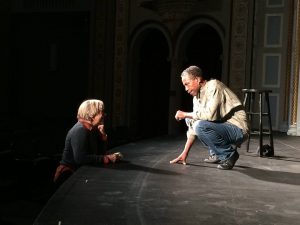
Gantt expounds, “She has such incredible sight into the human condition, there was never a moment where I felt that I could not speak to her about ANYTHING in or around or about myself. I couldn’t ask for a better squire for my show – whether she calls herself a director or not.”
Gantt’s onscreen acting credits include small supporting roles in films such as Requiem for a Dream and Malcolm X, dating all the way back to Presumed Innocent (1990), and television guest appearances on such current series as Law & Order SVU, and The Good Fight. His onstage performances of Rhapsody… toured the eastern United States (with stopovers in Sweden and Ontario, Canada) for about four years. The show included talkback sessions following each performance in which audiences could interact regarding what they had just witnessed – affirming, questioning, challenging their responses to the live experience they had just shared.
The physical tour was halted by the COVID pandemic. Rhapsody… evolved into a streaming event commissioned by various venues, organizations, and institutions. Viewers can now access the piece in three versions. There is a full 90-minute recorded performance; there is a 60-minute rendition appropriate for adolescent audiences, without any of the sexual stuff; and there is an Asynchronous Segmented edition divided into three movements for ease of classroom viewing and discussion. 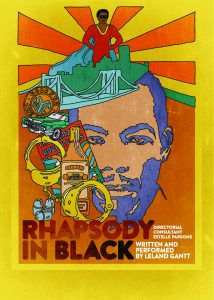
Back in March of this year, saboteurs attacked the livestream talkback session following a Rhapsody… presentation through the public high school in East Greenwich, Rhode Island – cutting off Wi-Fi to some of the participants and spattering the chat with what the local newspaper reported as, “offensive comments which included profanities, and at least a couple of uses of the n-word…” That is, of course, how evocative the conversation on race can be. In this challenge we face as a society, responses are triggered; we could converse about what is triggered by the story of what happened to Terry Talley.
***
The elevator arrived at the lobby, the three men entered it and the door closed. When the door slid open on Terry’s floor, he was being held at gunpoint. The strangers walked him down the hall and forced him to admit them into his modest apartment where they bound him. They then proceeded to seize any objects they could find of any value – some practical, some beloved, and all financially and/or emotionally difficult or impossible to replace.
When Terry died many years later, I told that story at his memorial service. I recall framing the incident somewhat humorously. I used the sardonic phrase, “of course” just before relating that the men pulled out a gun in the elevator. Shame on me?
LeLand Gantt confessed to me in those 2015 interviews that racial profiling, “is so pervasive a construct in our society…that, even as a victim of it, I myself sometimes perpetrate it. I actually have found myself impelled to react defensively to the fact of approaching a few young black men on the street at night – just because they are black.” If Terry Talley had followed his initial impulse and left the building, would he have been racist? If the men had been white, would he have had the same instinct?
“There are times when common sense would lead you to ‘cross the street,’ physically or metaphorically, to protect yourself when on a dark street in a shady neighborhood at night,” LeLand proffered. “But this situation isn’t in vogue ALL THE TIME.”
If Terry had left the building, he would have been spared the dual traumas of being threatened with a gun and bound, and he would not have been robbed of the property, and the experiences he might have continued to enjoy with the property, that the thieves stole from him. But would that choice have robbed him of something more precious?
“The clutching of the purse, crossing of the street in broad daylight to evade proximity to that idly-approaching-not-threatening-you-in-any-manner-other-than-just-being-black person, and the assumption that that person is more likely to be a criminal or dangerous to you simply because they are black needs to be examined,” Gantt suggests. “If one can do that, NOW we have a conversation!”
***
For more information on viewing or commissioning Rhapsody in Black get in touch at www.rhapsodyinblack.org/contact.
~FW
Jan 28, 2021
George Gerdes Bit Me:A Brief Tribute to a Fine Familiar Face
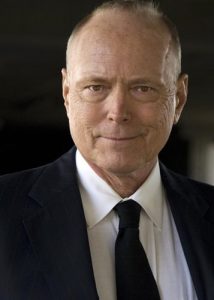
Actor George Gerdes once bit me on the thigh. He did not pierce the flesh but his teeth marks lingered on my skin, as I recall, for months.
I will miss him because, as widely reported in national print and digital news media, George experienced a brain aneurism on New Year’s Eve 2020. He perished on New Year’s Day. He was, like nearly all actors noted here at Supporting TV Cast, a keen, crafted talent who graced the worlds of TV, film, and stage as a staple, reassuring presence with no garish red-carpet glare. His credits are numerous. Sometimes he is tucked away in the cast, playing characters denoted as “Man #1” in the “Bubble Boy” episode of Seinfeld (1992) or as “Uddevalla Detective” in the film Girl with the Dragon Tattoo (2011). On Broadway, he played several roles in the original cast of A Few Good Men (1989). Through the years, he made substantial guest appearances on such TV series as ER and The X-Files and he enjoyed third billing in 2020’s critically acclaimed political thriller with a sci-fi twist, The 11th Green, in which he portrays Dwight Eisenhower.
But it was the young face on the cover of his album Obituary whose teeth sunk into my leg at Carnegie Mellon University.
Some knew George as an innovative singer/songwriter in the 1970s, warming the performance platforms of intimate Greenwich Village music clubs and recording for United Artists – the aforementioned album Obituary and a second album, Son of Obituary. He holds a distinguished niche in the folk/pop culture world; after his death, an earlier quote from Joni Mitchell started recirculating in which she says of his piece “Say So What Else Is New?” that is was, “the happiest sad song I’ve ever heard.” New York Times reviewer John Rockwell in 1978 described George’s voice as an, “uncommonly sweet and penetrating tenor,” and noted that his songs, “often as not have a strong component of quirky, even crazed humor.”
That component of quirkiness is how he came to bite me. It was an in-class improvisation, framed to delve into the underlying catalysts in a scene from, of all things, Romeo and Juliet. I was exploring Juliet’s need to resist her longings; George was unmistakably exploring Romeo’s drive for contact with Juliet and his frustrations with the barriers between them. So, he lunged and bit me – an unorthodox channeling of Romeo’s love which the drama teacher immediately stopped. (In the study of acting, real emotions and sacrifice of one’s comfort zone are a must; real physical injuries, however, cross the line.) I’m certain that that unbridled creativity was the kernel that developed into a distinct balance of intuition and craftsmanship that George later brought to every role he played in his career.
I think his quiet, contained aura elicited a degree of affection from nearly everyone who ever knew George. We maintained only a diaphanous contact after graduating from CMU, with him once spelling out to me in an email, “We are fam-i-lee.” When news reached him on the west coast through a mutual friend that I, in New York City, was pregnant with my first child, the friend reported that George expressed his congratulations by saying, “Bite her on the thigh for me.” ~FW
June 27, 2020
Daytime Emmy Drama Series Awards: once The Best of Everything, now just a few Dark Shadows?
I held a Daytime Emmy statuette once. As everyone says about those show biz awards, they are heavier than you expect.
During the global pandemic lockdown broadcast of the 47th Annual Daytime Emmy Awards last night, hosts and presenters commentated from their homes; the winners, who had obviously been informed of their victories before airtime, gave their grateful acceptance speeches from their living rooms, family rooms, and backyards – along with a lot of articulate and impassioned addresses on the hot button topic of racial inequity in America – and I don’t think anyone actually held onto a golden statuette.
It was back in the ‘90s, while interviewing Larry Gates (profiled here at STVC) that I held that Emmy. Gates had won the award for his work on the daytime drama series The Guiding Light. I read somewhere that, in their full bloom, there were 17 daytime serials televised each weekday. Sounds a bit high but possibly accurate. Soaps certainly once ruled the afternoons of TV viewers. So, winning an Outstanding Performance Daytime Emmy award then, as Larry Gates did, meant that one’s work had been considered in comparison to the work of a near galaxy of other actors.
Not so much so today. One might say that As the World Turns, times changed; the Edge of Night approached, the Guiding Light was extinguished, and fans were forced to end their Search for Tomorrow. Daytime TV has turned into Another World, with a scant 4 soaps left today: The Bold & the Beautiful, Days of Our Lives, General Hospital, and The Young & the Restless. Competition for the awards is no longer amongst a galaxy so much as, maybe, amongst a constellation.
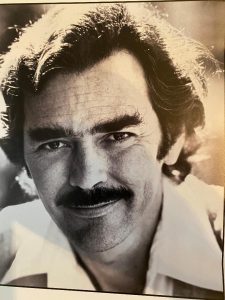
In STVC fashion, the Daytime Emmy awards show put into my mind, not the tribe of daytime serial stars but, the soap opera “day players” (actors appearing in a non-recurring role) and, especially, the “under-fives.” You know under-fives; they are those nonregulars you don’t recognize, who mostly smile rather vaguely when spoken to or nod in response during part of their onscreen time. It can get awkward, but their number of spoken words must remain under a certain limit within five lines – otherwise, union rules demand that their pay scale increases.
As a case in point, I was seated on the #104 bus in Manhattan, traveling down Broadway one afternoon when Michael Graves, an actor I knew, boarded the transit. Soap operas were in their heyday at that time and, in catching up with each other, Michael began to tell me about a recent gig he had had on All My Children. He reported that his under-five character was a restaurant patron who was suddenly overtaken by choking. He said that his rescue was a plot devise to reunite Dr. Angela Baxter Hubbard, played by Debbi Morgan, and a love-interest, or near love-interest, whose relationship had become strained. As I recall, her romantic involvement was a character named Cliff Warner who was definitely played by Peter Bergman. Michael expressed that he had enjoyed the one-day gig and was glad for the income.
I took in his account with enthusiastic attention. But what I did not tell him – and I admit this now with a touch of remorse – is that I had actually SEEN his performance. Why didn’t I tell him that? I wanted to give the impression that I was too intellectual and too otherwise occupied, as a busy speech teacher and writer, to watch soap operas. In truth, I was neither too intellectual nor too otherwise occupied to take an afternoon refresher of some intermittent soap watching. And I still am not.
(Michael must have made a good impression in that under five role because he later returned to All My Children as what his daughter, Becky, describes as, “a mildly recurring character.”)
Even though much of the intelligence and sincerity expressed last night impressed me, the artistic competition amongst such a small field of players seems to me a little…forgive me…silly. Still, I’m happy for last night’s winners. Times are what they are, and we each have, after all, only One Life to Live. ~FW
Summer 2020
Rebirth: Isn't It Lovely
Currently, we find ourselves in the midst of large-scale upheavals –
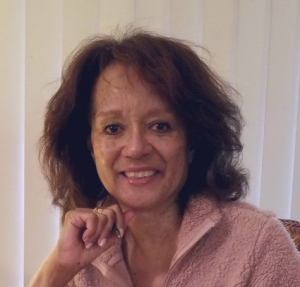
groping for “new normals” in a global pandemic; passionate demands across the U.S. and the world for social reform and racial justice; a vitriolic presidential election; retaliatory and inadvertent attacks from Mother Nature; and more. I hope the rebirth of Supporting TV Cast will contribute some small-scale positives to life now and to come. Lauding the under-lauded is a pleasure.
Back in 2011, I took a 6-week, online course in HTML coding with an eye toward creating a website dedicated to biographies of my favorite category of actors – the ones who rarely, and for the vast majority never, get interviewed on the red carpet. These are the actors whose faces are familiar enough that we know, without giving it a single conscious thought, we can count on them for good, solid, performances; we can always take them for granted. Their work is an inconspicuous but reliable part of the collective American experience. I set about interviewing a few of them and/or their families, friends, and colleagues to create their personal and professional chronicles.
Two years later, an independent publisher/editor in Binghamton, NY – shout out to Chris Bodnarczuk! – launched a brave arts & culture newspaper called Triple Cities Carousel. I had a talk with Bodnarczuk and, instead of the random freelance writing I had been doing before and during the birth of Supporting TV Cast, I became a regular staff writer and columnist, with consistent deadlines. My pet project went on hold until the August 2019 issue of Carousel hit the streets. It was presumably the last issue (though I would not be surprised if that dedicated little publication also experiences a rebirth sooner or later) and I was able to return to random freelancing, with more time to build the STVC treasury.
I found a talented, skilled, and responsive design team – Max Bernard of Max Bernard Web Design and graphic artist Lauren Clifford. Max constructed a new site that has innovation and provides ease. Lauren created a logo that expresses STVC’s spirit, with that tiny star down at the edge of the box that contains the word “TV.” Our intent is soon to add occasional interactive, themed, pop quizzes, designed to give instant feedback so visitors can have some fun testing their TV/film knowledge.
If the STVC rebirth makes you feel good and you like what you find here, drop me an email at FW@SupportingTVCast.com. You might say, as John Larch’s character and a lot of other familiar faces kept reassuring evil young Anthony about his deeds in the “It’s a Good Life” segment of the original Twilight Zone, “It’s a real good thing you done that.” Only, unlike Larch et al, I hope you mean it. ~FW
Jun 11, 2020
Answers to Summer 2020Mini-Quiz

An interactive quiz feature is coming soon to STVC!
In the meantime, here are the answers to the Summer 2020 Newsletter Mini-Quiz – the correct monikers for each of these 3 faces whose given names are usually billed by initials only.
(left) H.M. Wynant: This non-stop veteran is my absolute favorite kind of actor – solidly crafted with a jam-packed career that spans decades. His “Howling Man” episode is always included in Syfy’s Twilight Zone marathons. You can catch his off-beat good looks in multiple Perry Mason segments on FeTv, or his seasoned personae in works like Footprints (2009), a paean to Hollywood Boulevard (the street, not the movie).
(middle) R.G. Armstrong: Here is a career to match Wynant’s – decade-spanning, though he made his final exit from this mortal coil in 2012. His television presence is so familiar that, for many, it’s like looking at some old uncle you keep forgetting about until he comes to visit. What he’s probably best remembered for would be hard to say; IMDb seems to think it’s his role as a general in Predator (1987).
(right) C.C.H. Pounder: This crafted, sought-after ace pro is surely familiar from TV series such as NCIS: New Orleans, Sons of Anarchy, and Law & Order: SVU. But Carol Christine Hilaria Pounder is not as easily recognizable as Mo’at, Neytiri’s mother and spiritual leader of the Omaticaya clan in Avatar. (Look out – I see there is an Avatar2 set to be released next year, and more to follow through 2027! Meet you at the Tree of Souls?) ~FW
June 4, 2020
Facebook Threesome

(I intended to write this 5 days ago, the day I posted the Mini Quiz on Facebook; and if you have come looking for the “Before Black People Were Invented” entry, that’s the post below.)
Again, none of the 3 actors in this Mini Quiz are profiled on STVC but they are grouped here because their television oeuvres are large, and their names are gender-neutral, making them ideal for a multiple choice quiz.
I must begin with Parley Baer, pictured right, because it would almost be easier to name the TV series from the 50s to the 90s on which he did NOT appear than to list the ones on which he did. He worked constantly, having guest roles on practically everything from Dragnet to I Love Lucy, The Bill Cosby Show, Charlie’s Angels, Little House on the Prairie, Beverly Hills 90210 and even, late in his career, turned up in a recurring role for a while on the only soap opera he ever did: The Young and the Restless. Surprisingly, his acting credits end in 1996 though he lived until almost the end of 2002, dying at age 88.
The image of Dee Freeman, pictured left, is a young one dating back to 1995. This creative and versatile actor has played comedy and drama as a nurse, a judge, a server, a ghost, a police sergeant – you name it – on series such as Silk Stalkings, Bones, Dexter and more. She has portrayed quite a few doctors and has a doctor role again in Delicate State, a film that sounds like it might be innovative and is in post-production status at the time of this writing.
Of all of his prolific TV roles for over two decades, when I think of Robin Hughes, pictured in the middle, I think first of him caged in the “Howling Man” segment of the original Twilight Zone. I don’t think I’ve seen this movie, but he plays a talking head – not a broadcast journalist, mind you, but an actual talking severed head – in The Thing That Couldn’t Die (1958). Get me some popcorn, please. ~FW